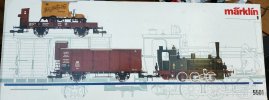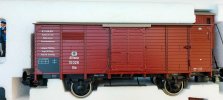By having a trailing vehicle, you can do the minimum to the loco's, which will mean they should hold their value. - There value may (or may not) affect your decision to weather them?
A trailing vehicle also means you can experiment with the number of cells you require, for the top-speed you want to run at.
At a later date, you may wish to move batteries and receiver/controller into the loco?
A trailing vehicle, can also be shared between the two loco's you have, which would help keep your initial costs down.
PhilP.
A trailing vehicle also means you can experiment with the number of cells you require, for the top-speed you want to run at.
At a later date, you may wish to move batteries and receiver/controller into the loco?
A trailing vehicle, can also be shared between the two loco's you have, which would help keep your initial costs down.
PhilP.






